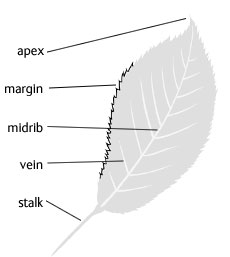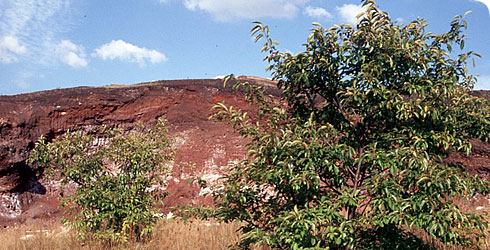Rum cherry
Prunus serotina
ID check
- Flowers in spikes of 10 or more.
- Leaves with rusty- or orange-coloured hairs beneath.
Description
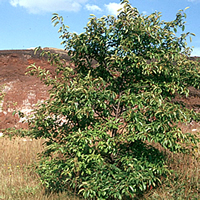
Rum cherry tree © Barbara Tokarska-Guzik, University of Silesia, Bugwood.org
Tree
15–20m tall.
Bark
Dark grey to almost black, peeling in small strips and with a bitter, aromatic smell.
Leaves
Broadest above the middle, margins with fine, forward-pointing teeth and an apex with a short, tapering tip. On underside of the leaf there are rusty-coloured hairs on either side of the midrib.
Flower spikes
10–15cm long, cylindrical, with leaves at the base of the spike.
Flowers
White, 8mm, the petals minutely toothed.
Ripe fruit
8mm, black, retaining triangular, sharp-pointed sepals at the tip.
Notes
The rum cherry is supposedly named because of its use to flavour rum and brandy. It is unusual among cherries in retaining the sepals on the ripe fruit.
In the UK, the rum cherry is mostly planted as an ornamental tree. In Europe it is sometimes planted for timber.
Images
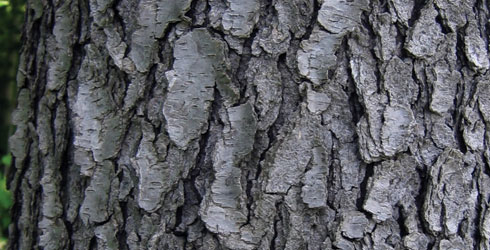
Rum cherry bark.
© Keith Kanoti, Maine Forest Service, Bugwood.org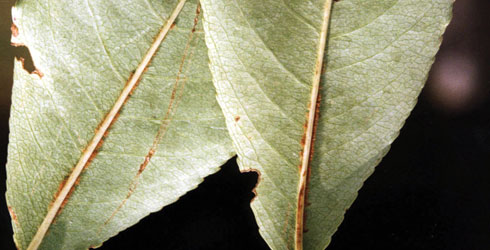
Rum cherry leaves have rusty or orange-coloured hairs either side of the midrib.
© Bill Cook, Michigan State University, Bugwood.org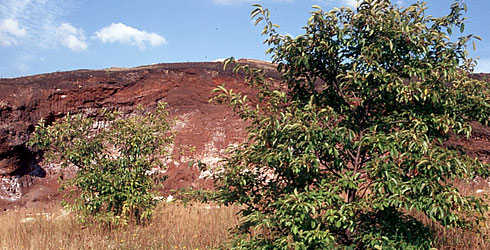
Rum cherry tree.
© Barbara Tokarska-Guzik, University of Silesia, Bugwood.orgDiagrams
These explain some of the important tree and plant parts mentioned on these factsheets.
Flower

Leaf parts
